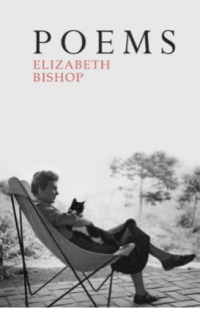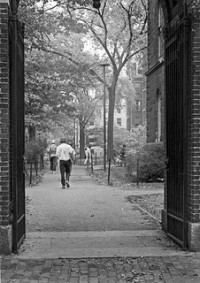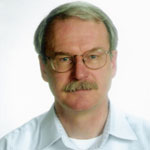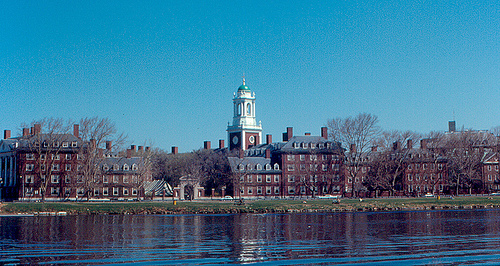Theme Essay by Robert Boucheron
A Victorian Lady in Reduced Circumstances
In the spring of 1973, I took Elizabeth Bishop’s poetry composition seminar at Harvard University.
Admission was by writing sample, and enrollment was limited to ten. Most of the others were graduate students, while I was a college junior. I had written poems and stories since high school, and I had a vague notion to become a writer. Applying for and then taking the course would test that notion.
 Bishop was well known, though not the cult figure she is today. She had won many awards, most recently the National Book Award for Poetry in 1970. But her reticent style was unfashionable, and she was overshadowed by contemporary poets.
Bishop was well known, though not the cult figure she is today. She had won many awards, most recently the National Book Award for Poetry in 1970. But her reticent style was unfashionable, and she was overshadowed by contemporary poets.
This was an era of confessional poetry, filled with seamy personal details. I read Bishop’s books in the deserted Poetry Room of Lamont Library, and I listened to one of her recordings there. As a fan of French cinema, I imagined her as glamorous, like the actress Catherine Deneuve.
She turned out to be a stout woman of 62, dressed conservatively, her abundant gray hair neatly styled. Her voice was low and even. The effect was that of a genteel hostess, a respectable middle-class lady.
At the time, there was no writing program at Harvard. So far as I know, Bishop’s course was one of a kind. She also gave a course in modern poetry, as described by Dana Gioia in his essay “Studying with Miss Bishop.” She taught at Harvard from 1970 to 1977.
The seminar met twice a week in a windowless conference room in Holyoke Center, an administration building in Harvard Square. Completed in 1966, Holyoke Center was a Brutalist concrete highrise, at odds with the Georgian brick buildings of Harvard Yard across the street. We sat in padded swivel chairs at a large table with Bishop at the head. She was always on time, and she always came prepared.
The seminar followed what was to become the standard workshop model, reading aloud and group criticism of each student’s poems. We started with our writing samples. Bishop coached us in pace, diction, and appropriate pauses. She favored a natural speaking style, and she deprecated the singsong that many poets use. When I read one poem too slowly, she told me to try again. She was open to all forms and styles, but she preferred short lyric forms. She disliked shape or pattern poems that depend on the way they’re printed. Distaste would creep into her voice, as if she detected a bad smell.
I remember little of the other students. One young woman from the South pronounced the word “mirror” as “mere,” which exasperated Bishop. The class was inclined to accept regional accents, but Bishop insisted on Standard American English pronunciation, as used in radio and television news. She wanted correct grammar, spelling, and punctuation. She acknowledged that dialect has featured in American literature from the start, but she urged caution. It is a difficult feat to pull off, she said, and prone to sentimentality.
Most of Bishop’s comments were at the level of the line and the word. She rarely criticized subject matter. She was interested in images, and she liked those rooted in the natural world. She wanted a consistent tone and one that suited the subject, as though a poem were music and each note must be right. She encouraged us to look up words in the dictionary. Her idea of the poet was old-fashioned—a custodian of language.
Bishop is on record as disliking students and being doubtful that writing can be taught. In class, however, she was tactful. She did not volunteer information about herself, but she replied to questions from us. She singled out Robert Lowell as being helpful to her career. It’s likely that he engineered her appointment at Harvard. He suggested that she apply for grants and awards, and she suggested that we do the same. She was candid about the financial side of writing and her own need for income, like a Victorian lady in reduced circumstances.
A question on women poets elicited a rare personal statement. She objected to being called a woman poet or feminist, and she refused to be included in any anthology of that ilk. The title of “poet” was enough.
On her working methods, Bishop was apologetic: “People say I am a perfectionist. The truth is that I often return to a poem started months or years before. I am very slow, that’s all.” She quoted Paul Valery: “A poem is never finished, only abandoned.”
Alcoholism was an occupational hazard, she said. So many poets suffered from it, and the damage to their health was enormous. She said nothing of her own drinking, but she alluded to a troubled past from which she had recovered.
After several class sessions devoted to our writing samples, Bishop assigned work, and she conducted exercises in class. One exercise was to write a villanelle, a rhymed lyric with recurring lines. Her own “One Art” is an example, with its repetition of the line “The art of losing isn’t hard to master” and the word “disaster.” From James Joyce’s A Portrait of the Artist as a Young Man, she cited “Villanelle of the Temptress,” which begins: “Are you not weary of ardent ways?”
For an exercise in writing a sestina, Bishop asked each of us to write a word on a scrap of paper and pass the scraps to her. She then read out the words, which were to be the final words of each line. A sestina has six stanzas of six lines, in which the final words vary in order, and a concluding stanza of three lines, each of which contains two of the words. The other students picked words like “gray” or “stone,” while I contributed “vessel.” After shaking her head, Bishop included it. We wrote for thirty or more minutes at the conference table. The class time was too short to write 39 lines, so our assignment was to complete the sestina.
She told us to memorize “How Pleasant to Know Mr. Lear,” by Edward Lear. We would be asked to recite from it at the end of the semester, a stanza each. She explained the origin of the poem, a girl who exclaimed: “How pleasant to know Mr. Lear!” She liked the pathos, as in the line “He weeps at the side of the ocean.” She liked the rhymed stanza form. And she liked the nonsense, a kind of brainteaser. Bishop also liked the next-to-last line “Ere the days of his pilgrimage vanish,” especially the word “pilgrimage.”
Toward the end of the seminar, Bishop gave us a final assignment: to collect and revise the poems we had started in class. These we submitted as a term paper. She never wrote comments, but she did offer a personal interview at her apartment on Brattle Street in Cambridge.
 I found the old building one spring afternoon. Bishop buzzed me into a narrow entry, then opened the door to a sunny apartment. We talked in her study. She sat at an overflowing desk, I in a wooden armchair. She seldom looked directly at me. The interview lasted an hour.
I found the old building one spring afternoon. Bishop buzzed me into a narrow entry, then opened the door to a sunny apartment. We talked in her study. She sat at an overflowing desk, I in a wooden armchair. She seldom looked directly at me. The interview lasted an hour.
Bishop began with general comments. She did not care for my imitations of Keats and Swinburne. They were done well enough, but what was the point? That ground was thoroughly tilled. Free verse forms and modern subjects offered room for new growth.
“You use too many adjectives,” she said, “three where one will do. Or none at all. Adverbs can often be omitted. Let nouns and verbs do the work of the poem. Try to be concise. You have a good ear, and your command of English is good. Perhaps you should be more daring.”
I recall only one poem of mine that she liked. It described a pickup truck driving a New England road past a sign that warned: “Frost Heaves.” She liked the line: “Where rocks all have their names.”
Bishop invited me to ask questions. Instead of sticking to the individual poems, I asked: “Do I have talent?” and “Should I pursue writing?” She declined to answer the first question. As for the second, she noted that most writers have a career of some kind, a way to earn a living.
When she heard that I intended to apply to medical school, she approved. “William Carlos Williams was a doctor. Anton Chekhov, too. Their work with patients influenced their writing, gave them material and trained them to observe. You can’t count on literature to support you. If you want to write, you will.”
I nearly failed organic chemistry and decided against medical school. After graduation, I researched foundations and charitable trusts for the Harvard Development Office for a year. I then went to the Yale School of Architecture to become an architect.
Bishop gave a reading at Yale in 1975 or 1976, and I sat in the audience. Afterward, I approached the lectern. She remembered me, graciously asked how I was doing, and murmured something about a reception. Stupidly, I said I could not stay.
Publishing Information
- “Studying with Miss Bishop,” by Dana Gioia, The New Yorker, September 15, 1986.
- “One Art” by Elizabeth Bishop.
- “Villanelle of the Temptress” by James Joyce.
- “How Pleasant to Know Mr. Lear” by Edward Lear.
Art Information
- "Harvard University—Eliot House" (1972) © Roger Wollstadt; Creative Commons license
- "Harvard Yard" (1971) © majunznk; Creative Commons license
 Robert Boucheron is an architect in Charlottesville, Virginia. He writes on housing, communities, gardens, electric motorcycles, and love gone wrong. His work appears in Blue Lake Review, Cerise Press, Construction, Cossack Review, Montreal Review, Mouse Tales Press, North Dakota Quarterly, 34th Parallel, and Zodiac Review.
Robert Boucheron is an architect in Charlottesville, Virginia. He writes on housing, communities, gardens, electric motorcycles, and love gone wrong. His work appears in Blue Lake Review, Cerise Press, Construction, Cossack Review, Montreal Review, Mouse Tales Press, North Dakota Quarterly, 34th Parallel, and Zodiac Review.
“Although historic, the area now seemed like an arid waste, with the sun and shade producing eerie effects in the artificial canyons.” — “A Hermit in Chelsea”

